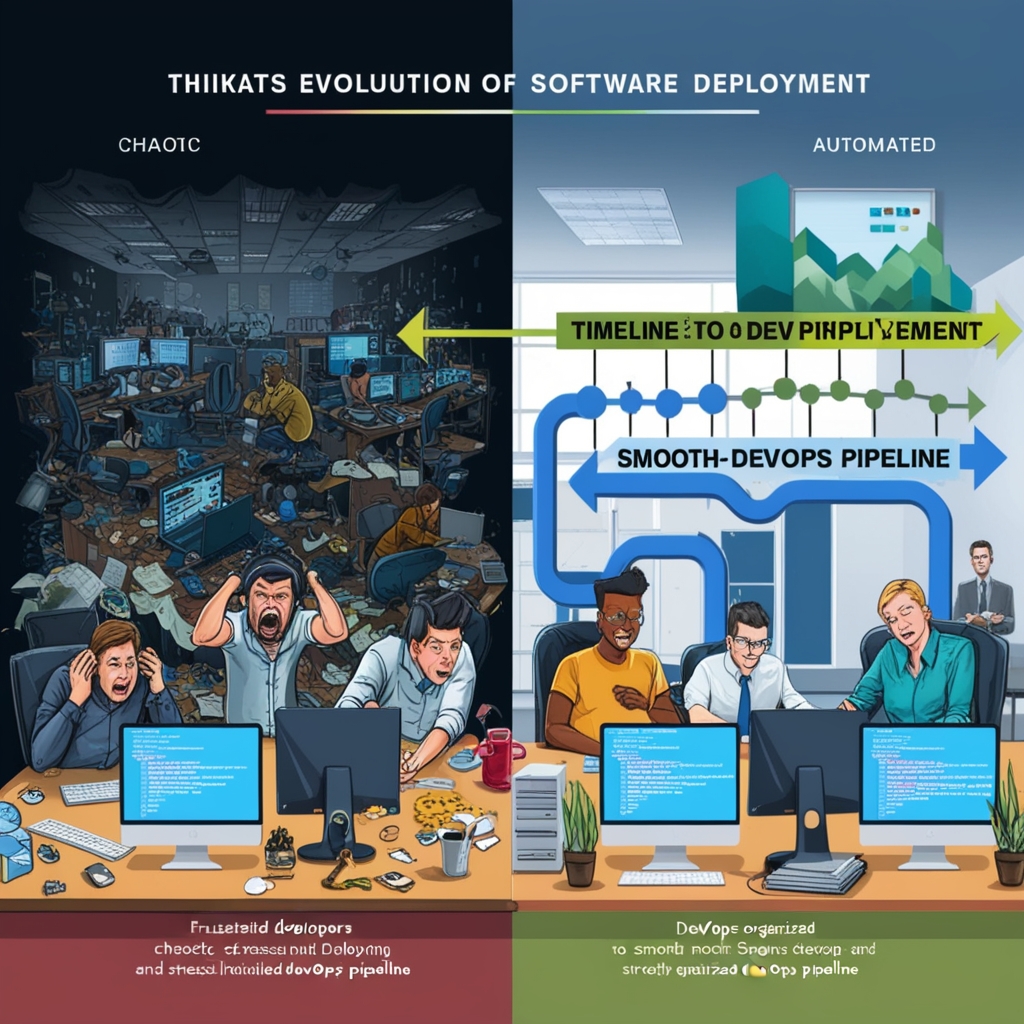The Evolution of DevOps
 Aman Mishra
Aman Mishra
DevOps has transformed the landscape of software development, turning chaotic, manual processes into seamless, automated pipelines. But how did we get here? In this blog, we'll explore the key milestones that have shaped DevOps over the past decade and the profound impact they've had on the way we build and deliver software.
The Early Years (2013-2015): Laying the Groundwork
The journey of DevOps began with a shift in focus from merely getting code to work to refining how it’s delivered. Between 2013 and 2015, the conversation around DevOps evolved significantly, emphasizing the integration of tooling and data-driven practices.
This period saw teams starting to ask critical questions: How can we deliver software better, faster, and more compliantly? The answer lay in measuring and improving pipelines, setting the stage for the tremendous growth of DevOps that was to follow.
👉 With better tools and data, the path to efficiency became clearer.
The Introduction of Core Metrics (2013)
A major turning point came in 2013 with the release of the DevOps Handbook, which introduced four core metrics that would become foundational to the DevOps movement:
Lead time for deployment
Deployment frequency
Change failure rate
Mean time to recovery
These metrics provided teams with a way to quantify and improve their DevOps processes, transforming how organizations approached software delivery.
👉 Metrics became the backbone of DevOps, guiding teams towards excellence.
Advancements in Containerization and Orchestration
During the same period, companies like Docker and Google were at the forefront of advancing containerization and orchestration technologies. These innovations paved the way for standardized, scalable, and efficient delivery systems, revolutionizing infrastructure management.
Containers introduced a new layer of abstraction, allowing developers to package and deploy applications consistently across various environments. Orchestration tools like Kubernetes further streamlined these processes, enabling teams to manage large-scale deployments with ease.
👉 Containers revolutionized how we think about infrastructure and deployment.
Security and Cloud Innovation (2016)
By 2016, the DevOps conversation had expanded to include security, reflecting a broader trend of integrating security practices into the development lifecycle—what we now refer to as DevSecOps.
At the same time, cloud platforms like AWS and Azure were making it easier to deploy and manage containerized infrastructures. This accessibility allowed even small teams to leverage powerful tools and infrastructure, democratizing access to cutting-edge technologies.
👉 Security and cloud innovation took center stage in the DevOps evolution.
The Rise of Developer-Centric DevOps (2019)
As DevOps continued to evolve, a more developer-centric approach began to take shape around 2019. This shift was driven by the rise of GitOps, which aligned DevOps closely with Agile, Lean, and CI/CD practices. The focus was on creating processes that were not only efficient but also more developer-friendly.
This change made DevOps the cornerstone of transformation in many organizations, emphasizing collaboration and agility as key components of successful software delivery.
👉 GitOps brought DevOps closer to developers, enhancing collaboration and agility.
Platform Engineering and Internal Development Platforms
Post-2019, the focus on platform engineering and internal development platforms grew significantly. These developments were driven by the need for more efficient tools and processes that could support the increasing complexity of modern software systems.
Platform engineering emerged as a critical discipline within DevOps, providing the tools and frameworks necessary for teams to build, deploy, and manage applications at scale. This focus on internal platforms also allowed organizations to standardize their processes, making it easier to maintain consistency and quality across teams.
👉 Platform engineering emerged as a critical component of modern DevOps.
The Ongoing Evolution (2023 and Beyond)
Today, in 2023, DevOps continues to evolve, with new challenges and innovations constantly emerging. The journey from chaotic, firefighting deployments to seamless automation is ongoing, and the future of DevOps looks brighter than ever.
As we move forward, the focus on continuous improvement, collaboration, and innovation will remain central to the DevOps philosophy. The evolution of DevOps is far from over, and it's exciting to think about where the next decade will take us.
👉 The evolution continues—DevOps is more vital than ever in driving innovation.
Conclusion
The evolution of DevOps is a testament to the power of collaboration, innovation, and continuous improvement. From its early days of chaos and manual processes to the sophisticated, automated pipelines we see today, DevOps has fundamentally changed how we think about software delivery.
As we look ahead, it's clear that DevOps will continue to play a critical role in shaping the future of technology, driving efficiency, quality, and innovation in ways we can only begin to imagine.
This blog provides a comprehensive overview of the evolution of DevOps, with clear transitions between sections and engaging insights that will resonate with readers interested in the field.
Subscribe to my newsletter
Read articles from Aman Mishra directly inside your inbox. Subscribe to the newsletter, and don't miss out.
Written by

Aman Mishra
Aman Mishra
🧠Data Structures and Algorithms | Python | Java | FullStack Development | Open Source